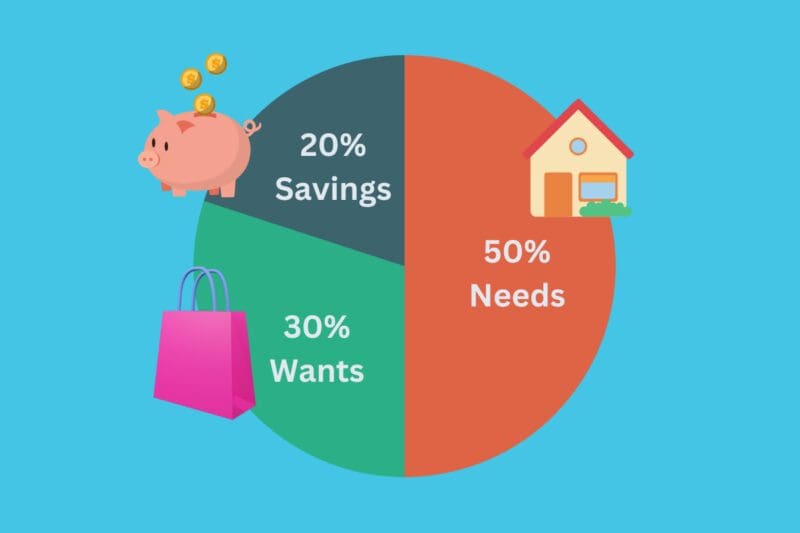Budgeting is an important part of managing your finances. It helps you to plan for the future, stay on top of your bills, and save for the things you want. With an effective budget, you can even better manage your paycheck, ensuring a balance between cash inflow and expenditures. Whether it’s maintaining a good balance sheet or considering equity and overhead, a well-planned budget has many perks.
Creating a budget can seem confusing, but it doesn’t have to be. With a few simple steps, you can create a budget that works for you and your lifestyle. Whether you’re a student surviving on a small income, an entrepreneur wanting to invest all available cash into your business, or a single mom needing a budget so you can provide for your family, this guide will walk you through the basics of budgeting. From setting goals to tracking your spending, with a little bit of effort you’ll be able to create a budget that works for you and your financial goals.
How to Create a Budget That Works for You
Creating a budget that works for you can seem like a big task, especially if you’re self-employed or juggling various debts such as federal student loans and credit card balances. Understanding variable expenses and fixed costs, or being aware of concepts like debt negotiation and debt settlement, can give you a sharper financial insight.
First, take a look at your income. This includes your salary, any investments, and any other sources of income. Make sure to include any income that is not consistent, such as bonuses or overtime pay. Don’t forget to include any cash payments that you receive such as for baby-sitting or dog walking.
Next, list all of your yearly and monthly expenses. This includes rent or mortgage payments, utilities, groceries, transportation costs, and any other regular expenses. Make sure to include any irregular expenses, such as car repairs, medical bills, or milestone birthdays.
Once you have a list of your income and expenses, it’s time to create your budget. Start by subtracting your expenses from your income. This will give you an idea of how much money you have left over each month.
Now, decide how you want to use that extra money. Do you want to save it for a rainy day? Do you want to use it to pay off debt? Or do you want to use it to invest in something like a 401(k) or an IRA (individual retirement account)?
Once you have decided how you want to use your money, it’s time to create a plan. Set a goal for yourself and decide how much money you need to save each month to reach that goal.
Finally, track your progress. Make sure to keep track of your spending and savings each month. This will help you stay on track and make sure you are reaching your goals.
50/30/20 Budget Strategy

Whether you’re trying to put together a budget on a low income, or just want to start saving or investing more, we recommend the popular 50/30/20 budget as a practical approach. With this method, you allocate approximately 50% of your after-tax income towards necessities, no more than 30% towards wants, and a minimum of 20% towards savings and debt repayment. This budgeting plan offers simplicity and long-term benefits, providing manageable debt, occasional indulgences, savings for irregular or unexpected expenses, and a comfortable retirement.
Let’s Break It Down: The 50/30/20 Budget
Begin by determining your monthly after-tax income. Based on this, we can calculate the ideal allocation for your needs, wants, and savings/debt repayment. By tracking your spending trends, you can gain insights into your expenses and effectively categorize them. As you build your budget you may come to realize that your spending in each category is over and above the allocated amount. If so, you now have a challenge to find cheaper brand groceries, reduce how often you get take-out, or cut back on eating out.
Allocate Up to 50% for Necessities
About 50% of your after-tax income should be dedicated to covering your essential needs. These include groceries, housing expenses, basic utilities, transportation costs, insurance premiums, minimum loan payments, and any other expenses necessary for you to work. If your essential expenses exceed the 50% threshold, it may be necessary to temporarily reduce your wants category. When managing your budget, it’s crucial to prioritize timely payment of your bills and credit card balances. Late payments can lead to interest charges and impact your financial stability.
While adjusting your spending can be challenging, it opens up opportunities to optimize your fixed expenses, such as finding better cell phone plans, refinancing your mortgage, or securing more affordable car insurance. If you have limited funds that need to go a long way, you may want to consider the best budgeting tips for large families.
Reserve 30% for Wants
Differentiating between wants and needs can be subjective, but as a general guideline, needs are essential for your daily life and work. Wants encompass discretionary expenses such as dining out, travel, holiday gifts, and entertainment. Determining the distinction may require personal judgment. For instance, spa visits or organic groceries can be considered wants. However, it’s important to strike a balance. If your primary goal is to eliminate high interest debt quickly (like credit card debt), you may choose to postpone wants altogether until you have built up savings or paid down debts. However, to keep your sanity your budget should still allow for some enjoyable spending! It’s good to have flexibility and allocate some funds for discretionary purchases, as this helps maintain your commitment to the budget.
Devote 20% to Savings, Investments, and Debt Repayment
Designate 20% of your after-tax income towards savings, investment, debt repayment, and planning for the unexpected. This category allows you to build an emergency fund, save for future goals, and accelerate debt repayment. Depending on your financial priorities, you may need to allocate funds between savings and debt repayment to achieve your goals effectively.
When allocating a portion of your income to investments, remember that some employers may offer financial perks, such as matching contributions to your 401(k) plan. Take advantage of these benefits to boost your retirement savings and enhance your financial future.
Remember to periodically review and adjust your budget as circumstances change. It’s essential to account for unexpected expenses, reassess your goals, and ensure your budget remains aligned with your financial aspirations.
How to Track Your Spending and Stick to Your Budget
Tracking your spending and sticking to your budget spending plan can be a challenge, but it’s an important part of financial health. Here are some tips to help you get started.
Tracking your spending and sticking to a budget can be difficult, but it’s an important part of financial health. With a little bit of effort, you can get your finances under control and start saving for the future.
How to Cut Expenses and Save Money
Start by tracking your spending for a month to get an idea of where your money is going. Then, create a budget that outlines your income and expenses. This will help you identify areas where you can cut back.
Saving money doesn’t have to be difficult. With a little planning and effort, you can cut expenses and save money.
How to Use Technology to Help You Budget
Budgeting can be a daunting task, but with the help of technology, it doesn’t have to be! Here are some tips on how to use technology to help you budget:
By using technology to help you budget, you can make sure you are staying on top of your finances and reaching your financial goals.
How to Budget for Unexpected Expenses
Budgeting for unexpected expenses can be tricky, but it’s an important part of financial planning. Consider your monthly budget plan as well as your annual budget plan. Here are some tips to help you budget for the unexpected:
By following these tips, you can create a budget that will help you reach your long-term financial goals. With a little planning and dedication, you can be well on your way to achieving your goals.
Budgeting is an important part of financial planning and can help you reach your financial goals. It can be difficult to get started, but with a little bit of effort and planning, you can create a budget that works for you. By tracking your income and expenses, setting financial goals, and creating a budget that works for you, you can take control of your finances and reach your financial goals.
Frequently Asked Questions



